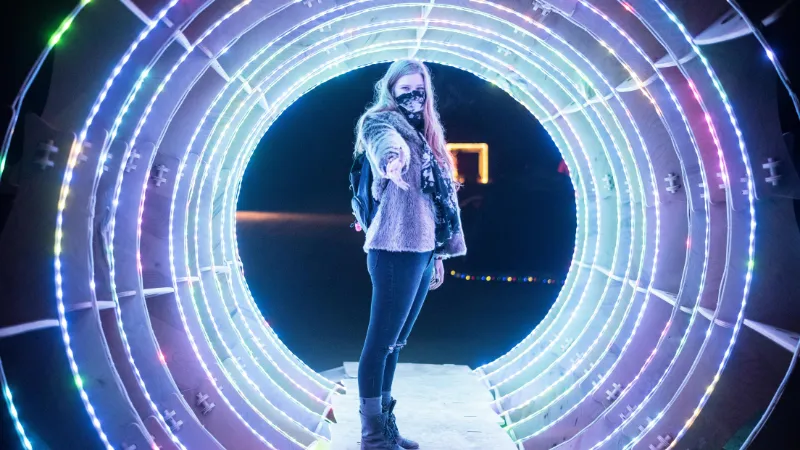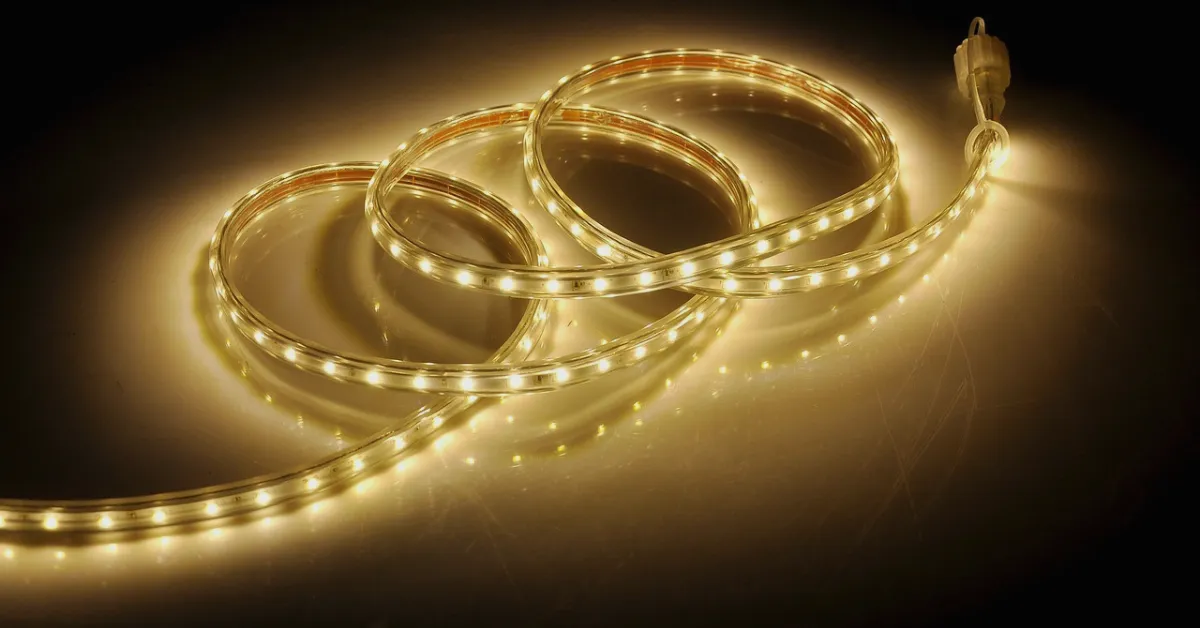
Whenever you watch a gamer’s video, you will see beautiful LED lights in the background, giving the room a different vibe. You might also want your room to have this vibe. But why should the vibe of the room only be like this? You can also give a different look to your outdoor spaces with LED strip lights.
In recent times, LED lights have become quite popular for giving rooms a modernist vibe. People use LED strip lights to decorate their bedrooms, kitchens, halls, etc. The best part of LED strip lights is that they can be used indoors and outdoors.
Many now use LED strip lights outdoors, specifically on the patio, deck, and garden, to make these areas look aesthetic. LED strip lights are wonderful because they consume less power, can be bent in any direction and do not require frequent replacement. In this guide, we will discuss everything you need to know about how to install outdoor LED strip lights.
Benefits of Outdoor LED Strip Lights
- Energy-efficient: LED lights consume much less energy than traditional bulbs.
- Long-lasting: Most LED strips can work continuously for 50,000 hours or more.
- Versatile: Suitable for accent lighting, path lighting, or emphasizing architectural features.
- Customizable: Available in many colors and different brightness options.
- Weather-resistant: Designed to withstand rain, snow, and UV exposure.
Plan Your Outdoor LED Strip Light Installation
It is great when you can plan your project before you have started buying materials and installing lights. This way, the installation process will go well, and you will be satisfied with this result years later.
Assess Your Space
Take a good look at your outdoor area and consider where you want to add lighting. Some popular options include:
- Along the eaves of your house
- Under deck railings
- Around patio edges
- Along garden paths
- Highlighting trees or landscaping features
Measure Your Installation Area
Measure these areas carefully once you’ve decided where to place your lights. LED strip lights can often be cut to size, but you’ll want to know the total length you need before purchasing.
Choose Your LED Strip Lights
When selecting outdoor LED strip lights, consider the following factors:
- IP rating: First and foremost, ensure that the lights you invest in for outdoor purposes have at least an IP rating of 65.
- Color Temperature: Choose between warm white, cool white, or color-changing options.
- Brightness: Consider how much illumination you need for your space.
- Power source: choose whether to use battery-operated, solar-powered, or plug-in lights.
Gather Your Tools and Materials
Before you begin installation, make sure you have all the necessary tools and materials:
- LED strip lights
- Power supply (if not using battery or solar-powered lights)
- Mounting clips or adhesive (often included with the lights)
- Wire strippers
- Scissors or utility knife
- Electrical tape
- Silicone sealant (for waterproofing connections)
- Drill (if mounting clips require screws)
How To Install Outdoor LED Strip Lights
Now that you’ve planned your project and gathered your materials, it’s time to install your outdoor LED strip lights. Follow these steps for a successful installation:
1. Prepare the Installation Area
Clean the surface on which you are going to mount the lights with care. Use a soft detergent in water and clean off any filth or dust, after which let it dry out completely. This will ensure that the adhesive or mounting clips stick properly.
2. Test Your Lights
Plug in and test the lights before mounting them to ensure all are working right.
3. Mount the Lights
Depending on the type of lights you’ve chosen, you’ll use adhesive backing or mounting clips to secure the lights.
For adhesive backing:
- Peel off the protective layer on the back of the LED strip.
- Carefully press the strip into place, working in small sections to avoid air bubbles.
- Use a cloth to press the strip and ensure good adhesion firmly.
For mounting clips:
- Mark where you want to place the clips along your installation path
- Screw or nail the clips into place
- Snap the LED strip into the clips
5. Waterproof the Connections:
Waterproofing of your outdoor LED lights will keep them away from water and other outdoor conditions. You can seal the connections with either silicone sealant or special waterproofing tools to protect the wiring.
6. Test the Lights:
Once it is set up, connect the power and check whether the lights light up as they should. If they do not, check if there is a sort of connection problem or if the light is placed right. Once fixed, then again test the installation.
Troubleshooting Common Issues
Even with careful installation and maintenance, you may encounter problems with your outdoor LED strip lights. Here are a few common issues and how to resolve them:
Lights Not Turning On
- Check all connections to make sure they’re secure.
- Verify that the power supply is functioning and properly connected.
- Ensure that any remote controls or smart home devices are correctly synced.
Flickering Lights
- Look for loose connections.
- Confirm that your power supply can handle the total wattage of your lights.
- Inspect for any water damage that could be causing a short circuit.
Sections of Lights Not Working
- Examine the LED strip for any visible damage.
- Make sure all connections are secure.
- If using cuttable strips, make cuts at the designated points.
Wrap Up on How To Install LED Strip Lights Outdoor
Outdoor LED strip lights appear complicated initially to install, but with good planning and attentive steps, you can make your outdoors look great with beautiful lights. First, look at your outdoors and decide which type of lights will suit you better. Then, proceed slowly and attentively with the setup, ensuring it looks good and is safe.
Read Also: How To Hang String Lights On A Balcony
